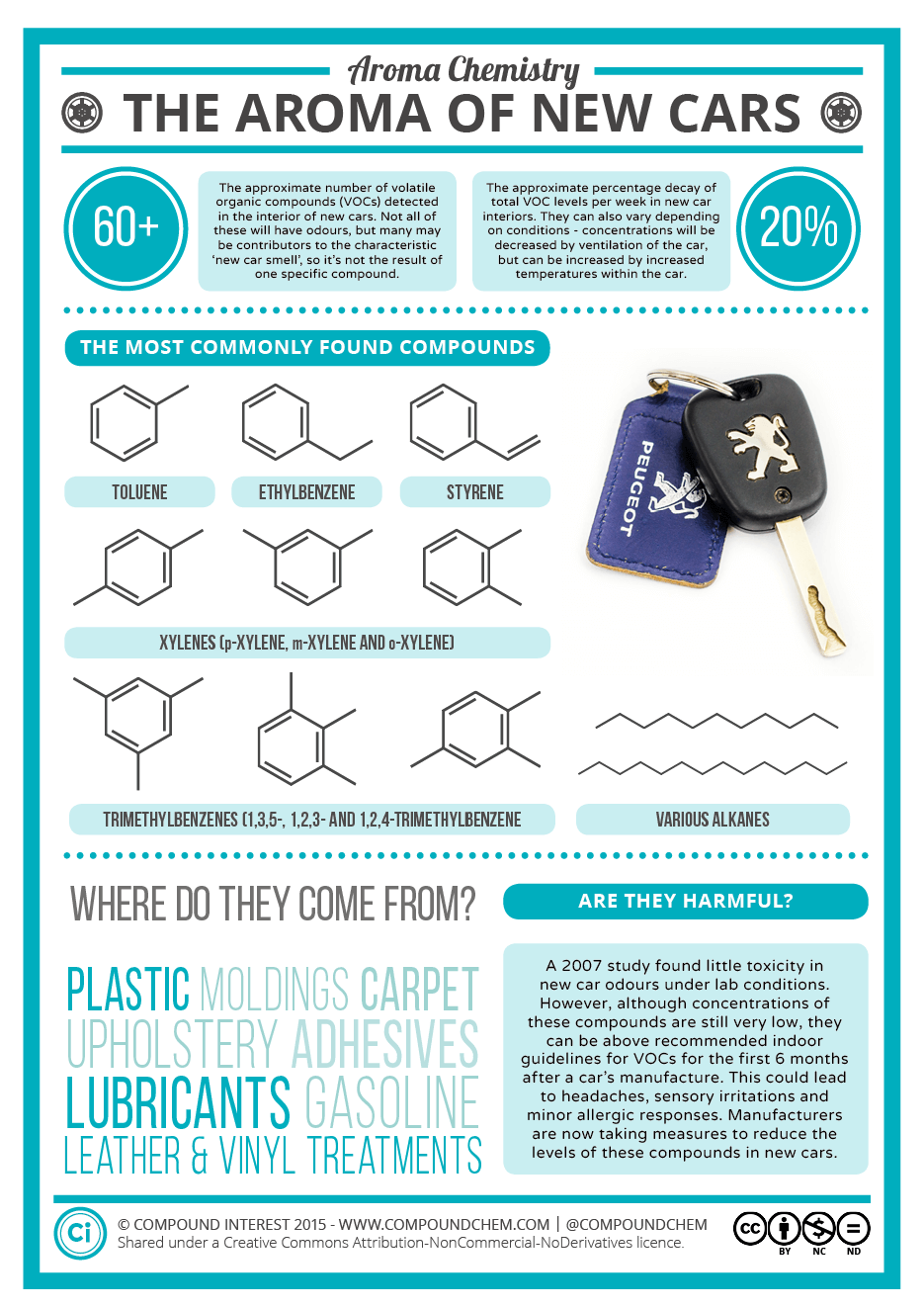I hate cars as much as the next sane person. That being said… Is there anything that doesn’t potentially cause cancer anymore? It makes it hard to take seriously, because if I did then I’d be paranoid about everything and my anxiety would be fucking overwhelming. Seems every day we find something seemingly harmless can cause cancer and it feels almost surreal.
It puts it in the same category as aspartame and mobile phones. That’s below the category with sunlight in it.
That’s because pretty much everything does cause cancer eventually. That’s just a consequence of how cellular division works. The trick is knowing how much exposure to any given thing is needed to cause cancer, and whether you’re likely to reach that threshold before you die of anything else.
Yeah, living causes cancer. The real question is, how much does something increase your risk of developing cancer. If it’s less than the increase from walking around outside for a few hours on a bright day you can pretty safely ignore that. As long as you’re not eating the interior of your car I doubt this poses a significant risk.
The article states its a 400% increase…
Well it says people with a high blood concentration of these chemicals have a 4x increase vs. those with a low concentration. That sounds bad but it might not be. If your odds of developing cancer in the low concentration group are 1 in a million, then your odds in the high concentration group are only 1 in 250,000 which isn’t exactly great but isn’t terrible either. On the other hand if your odds in the low group are 1 in 10,000, then in the high group it’s now 1 in 2,500 which is pretty bad.
All that is also ignoring that the article never directly says cars are responsible, only that the chemicals are present in them, and that people with a high blood concentration of those chemicals have a higher risk. Time is also never discussed. Does it take 80 years of near constant exposure to reach “high blood concentrations”, or are we talking like 5 years? The article is just too nebulous and vague. It shows some correlations, but seems to fall short of both causal links and quantifying the actual risks.
Your smart-ass little comment was about if it increases more than walking around outside. You made it without reading the article, and now you’re trying to strawman your way around it by talking about what a 400% increase actually means, as if everyone in here is as dumb as you think they are. Newsflash for ya. Most arent.
You completely missed the point. 400% is meaningless without more context. If I increase my odds of winning the lottery by 400%, I’d still be a moron for wasting my money in the lottery. Percentages are constantly abused in marketing and news articles to imply things that don’t really apply.
So yes, the article doesn’t actually specify how much your risk increases due to being exposed to those chemicals, just saying 400% is about as informative as saying 6 or 10,000. It implies a significant risk, but doesn’t support it. Without knowing how much risk there actually is it’s impossible to evaluate if the benefits outweigh the risks.
Your “risk” increases 400%. Your risk of getting a specific cancer before may have only been something like 0.02%, but now it’s 0.08%. That’s still a 400% increase.
Anxiety is known to the State of California to cause cancer
That’s one of those facts that is made worse by knowing it.
Gotta have that neoplasia smell
Cars suck but I’ve been spending too much time in them and now I’m too stupid to explain why
Not sure exactly why you’re getting downvoted as that was essentially the point of the article:
Flame retardant chemicals off-gas or leach from the seat and interior fabrics into the air, — especially in hot weather, when car interiors can reach 150 degrees Fahrenheit.
Advocates argue that the risks of these chemicals outweigh the benefits.
But health researchers have found that the average U.S. child has lost up to 5 IQ points from exposure to flame retardants in cars and furniture. And adults with the highest levels of flame retardants in their blood face a risk of death by cancer that is four times greater than those with the lowest levels, according to the Journal of the American Medical Association.
Not sure exactly why you’re getting downvoted
Because everybody else has been exposed to the same chemicals too.
The article implies that it’s a long term thing, but doesn’t actually state if it’s better or worse for older cars?
Do people that exclusively buy used cars have less exposure because there isn’t as much off gassing of the newly applied chemicals? Or are older cars more susceptible due to the breakdown over time?
Going by my own car that I bought new in 2008 and still drive, the chemical residue on my inner windshield has been rather consistent throughout the time I’ve had it, so it is still off-gassing after all this time.

There are many unhealthy chemicals in just about every part of the car, and heat cycles keep releasing more of them. The source for the above infographic say many studies have been done, but many sounded like they conflict with each other and many seemed to focus on short term health effects.
This page (and podcast) mentions cars part-way through, saying 80% of outgassing happens in the first three months.
There are references at the end.
The flame retardant thing is baffling me, anyway. Flame retardant fabrics/plastics in a vehicle either toting around 10-20 gallons of monumentally flammable gasoline, or hundreds of kWh of lithium batteries. Sure, chief, the fabrics will keep it from catching on fire…
Its not so they stop from catching fire, its so they dont instantly go up in flames, allowing the people inside to hopefully escape.
This, everyone should go lookup those fire department videos where they demonstrate furniture catching fire with and without flame retardant. The ones without are scary AF
It was never about outright preventing fires.
It was always about simply giving passengers the best chance to escape before the fire overwhelms all of the flame-retardant measures.
That said, the carcinogenic and neurological effects do kinda demand that a different solution be found right fucking quick.
Like cotton/linen fabrics? Cotton is pretty naturally flame resistant. Probably can’t help you on all the plastics in a modern car interior, though.
All I’m hearing is that you don’t appear to fully understand the conditions under which the materials are mandated to withstand extreme heat and combustion
I think many may now be too young to remember, but in the 70s and 80s, this was a big issue.
NY Times, 11 June, 1983 - DEMAND INCREASES FOR FIRE-SAFE CLOTHING
Clothing that can erupt into flames is coming under increasing scrutiny of consumer and fire safety organizations. They say Federal regulations governing the safety of fabrics used in clothing are too weak to protect the people who are most vulnerable: the elderly.
Those who most often suffer serious injury or death from clothing fires, safety experts say, are retired people who spend many hours of the day in such loose-fitting garments as bathrobes or housecoats. With the exception of children’s sleepwear, for which special regulations were decreed in the 1970’s, Federal standards allow clothing manufacturers to use all but the most extremely flammable fabrics.
Plastic fibers can melt to your skin, which isn’t great considering you’re in contact with the seats and carpets of the car. In an emergency, you’re not prepared to deal with additional complications like that.
The article I linked here is pretty good, so I recommend reading it if you aren’t familiar with this issue from back then. It will really help give you the other side of the issue to see why these chemicals are there to begin with.
Synthetic fabrics without flame retardants are basically wearable napalm. You absolutely want flame retardants in your synthetic fabrics because without them if you ever get exposed to a fire you can basically kiss your skin goodbye. If you can’t live with the retardants you better start wearing nothing but 100% cotton clothing. I mean you’ll still burst into flame pretty much instantly like that, but at least it won’t stick to you at the same time.
You mean, in the 70s and 80s it became a big issue because that’s when we started making clothing out of plastic instead of natural fibers.
Natural fibers will still combust with shocking speed without flame retardants, they just won’t stick to you while doing so. From the moment of being exposed to flame to the point at which the entire garment is on fire can be as little as a few seconds. No matter the increased risk I still rather keep the flame retardants, because death from large burns is a nasty way to go.
additional complications like that
“That”: your pants become bonded to your skin and the car seat
😬
As for why they’re getting downvoted, criticizing cars or the use of cars tends to get a lot of negative feedback.
^ Relevant Username
"Morrison, of the firefighters advocacy group, added that “firefighters are concerned that flame retardants contribute to their very high cancer rates.” "
Firefighters union (IAFF) is currently having to sue the governing body (NFPA) to remove carcinogens in the clothes (bunker gear/turnouts) they wear.
I love that fresh smell of a car in the morning
Well fuck. I got all the retard and no flame from all the cars over the years. One more for the multitude of things I’ve been exposed to that make me stuoid.
The article alludes to these chemicals being in fabrics. Does this include leather, not pleather, seats?
Better roll those windows down
Sunshine causes cancer too, and light requirements are sometimes part of zoning codes.
Yet another reason to buy imported cars.
It likely isn’t any different in imported models, flame retardant materials are a very basic and very important safety feature.
Also, it is surprisingly hard to import a car in the US. I’d kill for decent hot hatch that wasn’t $40k.
Adding to this, unless you did the importing yourself, it’s still subject to the exact same regulations. Under the law, Hondas are domestic (made in Ohio). Lexuses (made in Japan) are imported, but have to meet all of the same requirements to be sold en masse. This includes federal (including safety standards) and state (most famously, California fuel efficiency requirements).








